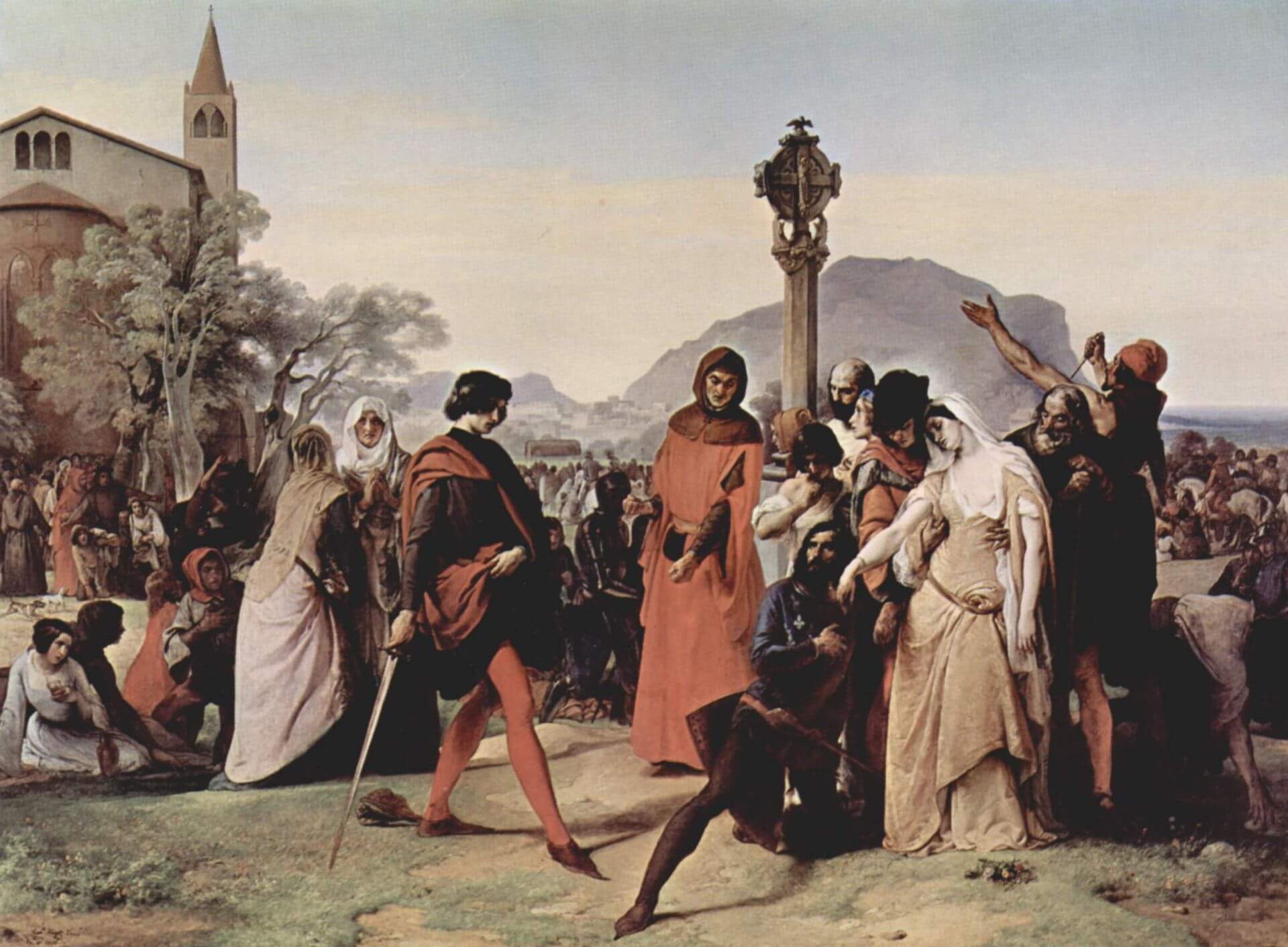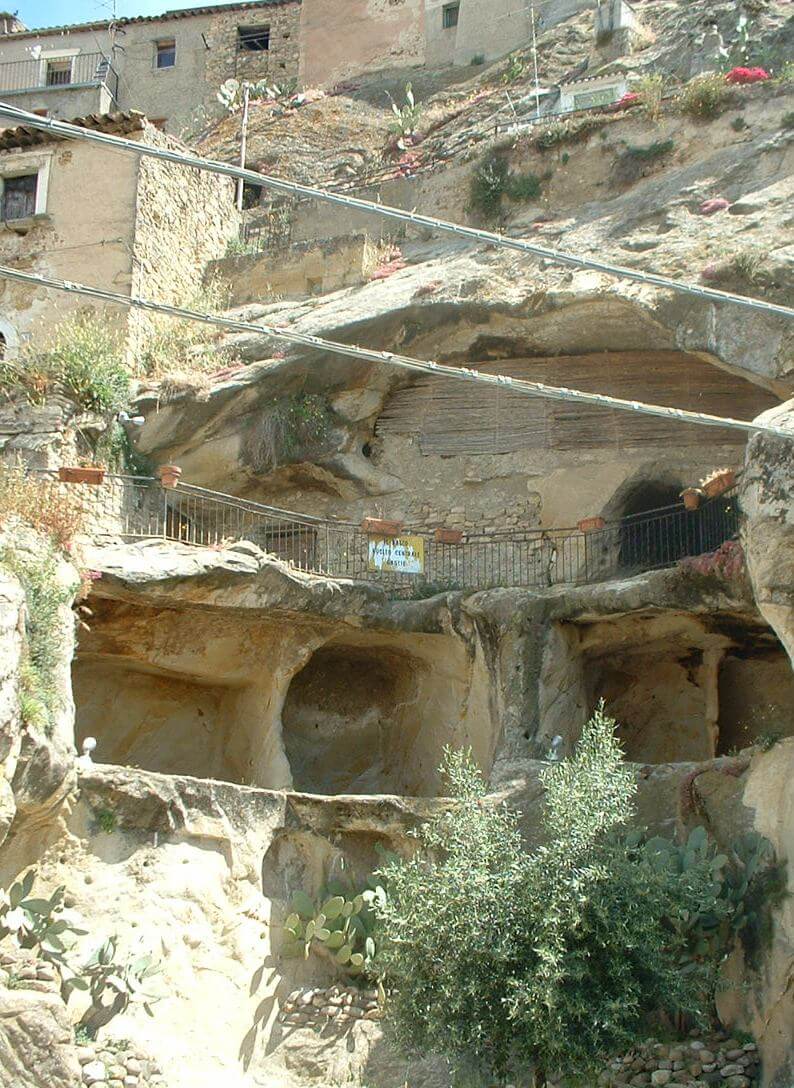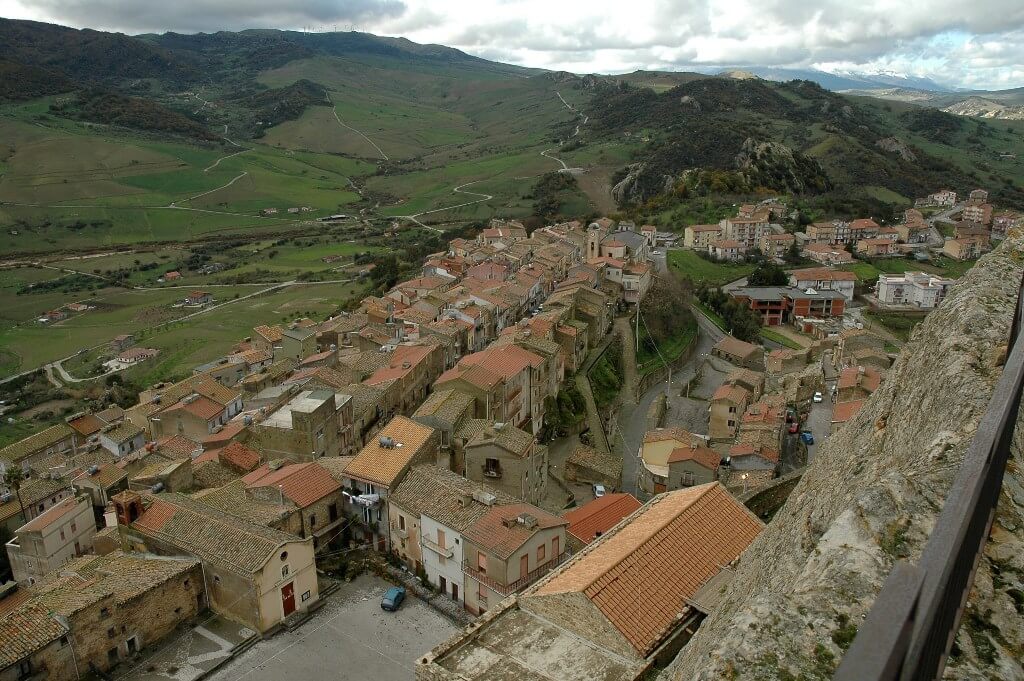sperlinga is one of the most evocative villages of Central Sicily, whose particularity is given by rock constructions. The village is located in the province of Enna, between Madonie and Nebrodi, and is now made up of just over a thousand inhabitants. The etymology of the name "Sperlinga" derives from the ancient Greek "spelìno"And it means"cavern" (grotto). They are in fact approx fifty le artificial caves which are located in the village, all excavated in the sandstone. These, in part, also make up the structure of the Castle of Sperlinga, built right on the high rock overlooking the territory. This small medieval village still retains its authenticity today and is visited by many tourists, especially during the the Tortone Festival (the typical dessert of the area). Sperlinga, precisely because of its uniqueness, has also been included in the circuit The most beautiful villages in Italy.
Sperlinga history
Although there is certain news about the village starting from Twelfth century, the history of Sperlinga is much older. The first settlements of the Sicilians in the territory date back topre-Greek era. The caves dug into the sandstone rock were created in the Sicilian period (XII-VIII century BC). Over the centuries, in addition to the Sicilians, the territory was also inhabited by Lombard peoples, arrived in Sicily. Only in 1082 there will be the first historical documentation in which the city of Sperlinga is mentioned. It is a privilege granted by the Count Ruggero. A document dated 1132 names the city as "castrum”, Owned by the family Russian Rubeo. During the Sicilian Vespers, in 1282, Sperlinga was the only city not to rebel against the French (Angevins), but it became one stronghold. Over the centuries, many noble families followed one another in the Sperlinga domain, i Ventimiglia, the Natali, Oneto and Nicosia.

Francis Ventimiglia (former lord of Geraci Siculo) will control the Sperlinga castle from 1296. The Ventimiglia family will remain owners of it until the end of Five hundred, when this will pass into the hands of Giovanni Forti Natoli, after having sold him the barony for 31 thousand scudi. With Natoli, Sperlinga passes to principality courtesy of the king Philip IV. This is the period of greatest splendor for Sperlinga, with the enlargement of the fiefdom and the construction of the new church of St. John Baptist outside the castle walls. In 1658 Francesco Natoli sold the Sperlinga fiefdom (but not the title) to Giovanni Stefano Oneto, which became of it duke. The Oneto family controlled Sperlinga until the second half of the nineteenth century. In 1862in fact, the castle passed into the hands of the baron Nuncio Nicosia of Nicosia. A century later, in 1973, the Nicosia donated the castle to municipality of Sperlinga, of which he is still the owner today.

Sperlinga Castle
The Castle is the symbol of Sperlinga. As already mentioned, it is partly made up of caves dug by the Sicilians. It was the Normans, at the dawn of Twelfth century, to build the structure on the top of the fortress for defensive purposes. The Sperlinga Castle, in addition to its particular structure, also went down in history for having given shelter for French soldiers during the Sicilian Vespers. To commemorate the event, in the sixteenth century, the Latin phrase "Quod Siculis placuit sola Sperlinga negavit"(What pleased the Sicilians was denied by Sperlinga alone).
Sperlinga Castle consists of a drawbridge at the entrance and from different areas, whose main hall is called "Hall of the Prince". In the artificial caves dug into the sandstone there are the stables, barn, prison, forge and other rooms used as dwellings. Finally, at the top is the watchtower, in order to better see the incoming enemies. Today in one of the caves at the foot of the Castle is the Sperlinga ethno-anthropological museum, in which objects and tools of the local peasant civilization are preserved.
The Tortone Festival
The most important event in Sperlinga is certainly the the Tortone Festival. It is a typical dessert similar to a pancake, with sugar and cinnamon. This festival is however also connected to the Sicilian Vespers. Every August 16th a historical re-enactment is made with a procession of ladies, street artists and flag-wavers also coming from the Sicilian villages that have castles. Each lady represents a municipality. Among these, the Lady of the Castles of Sicily. In addition to the typical tortone, during the event you can also taste typical local products, such as cheeses and salami or buy items from local artisans.
This wonderful village carved into the rock turns out to be a nice discovery, even for the most skeptical tourist. The castle has a unique structure of its kind and strikes from the first glance. The best time to visit this beautiful village is certainly during the celebrations for the Tortone Festival, especially for fans of medieval history. Its proximity to parks of the Madonie, of the Nebrodis e of Etna makes it an interesting location also for those wishing to go hiking. Sperlinga is a unique journey from the Sicilian era to the Middle Ages, which fills the eyes and heart with wonder and amazement. Seeing is believing.
Cover photo: © Lahiri Cappello - Wikimedia Commons (CC BY 2.0).





